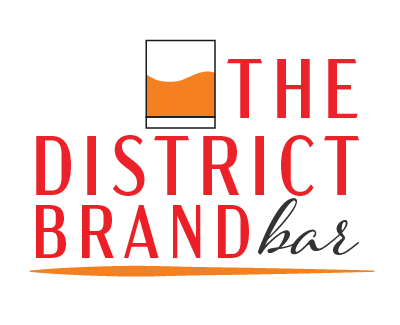The Difference Between Brand, Branding, Brand Identity, Brand Strategy and Marketing Strategy
And why Brand and Marketing Strategies are essential to any business
A BRAND is the full external experience of a business. It utilizes BRANDING elements to help tell the brand story. The way an audience experiences the brand is defined by the BRAND STRATEGY which informs the MARKETING STRATEGY to promote the brand.
Simple right?
There are a lot of terms thrown at you when it comes to communicating about your business.
All are important and they all woven together which makes it even harder to distinguish between them. And depending on your experience, you may have a different opinion about which is which or which comes first.
Today I'm going to break it all down for you.
My hope is you'll come away with an understanding of each of these terms, their importance, and why it's necessary to pay attention to all of them for your business!
Brand Vs A Business
Let's start with the brand. And first, we need to distinguish a brand from a business.
Your business involves everything that you do to become profitable, produce and sell your goods and services and keep the engines running. It involves your finances, legal, operations, human resources, etc.
Your brand is the part of the business that connects with your audience or customer. It's how you are perceived in your market. Everything that goes into the experience your audience has when it interacts with your business. That can be the look and feel of an ad, the social issues you stand for, the smell in your shop, the customer service experience over the phone, the word of mouth reputation, or the emotions you evoke from your audience.
In the simplest terms, your brand is the external-facing part of your business.
To me, everything else we will cover today rolls up to the Brand.
It's why I named my business the District Brand Bar. I look at the full audience experience. When I help you craft your unique brand recipe, I approach the branding, brand strategy, and marketing strategy from the audience perspective.
Brand Vs Branding Vs Brand Identity
Branding is where most people get confused. When they hear the word brand, they immediately think of branding. Branding focuses on brand identity and the process of creating brand assets. It's the ownable and identifiable marks that set a brand apart from others.
Branding is the act of creating the foundations of your brand. The components of your brand center around your brand identity: your visual identity and the brand voice. It's your name, the logo, and the colors you use, it's the imagery and design elements, everything that gives a brand a cohesive look and feel. It's also the words you use, the tone and personality your words convey, and those key messages that are woven throughout all of your content. They all go into helping tell your brand story and what makes you unique.
Branding is incredibly important for your brand. But building and growing your brand doesn't start and end with branding. You can have a Dropbox folder full of brand assets but without a brand strategy to employ them, they do no good.
What makes up a brand strategy
Your brand strategy is the roadmap for communicating your brand and it dictates how your audience experiences it. It's the long-term vision and the who, what, when, where, why, and how of your brand.
Your brand strategy takes your external-facing business goals, translates them for your audience, and looks at the long-term vision of how to meet them. It also creates guidelines and standards for your communications so that you are creating a consistent message with a cohesive look that will increase brand awareness and build customer trust and loyalty
Who your target audience is - understanding your target audience is key to knowing how to communicate effectively with those who you are most likely to build trust with.
What you stand for - your purpose, mission and values of your brand
When your goals will be met - having long-term SMART goals for your brand will keep you focused on what's most important to your business.
Where to communicate - knowing where your audience is receiving their information will help you know where you should be focusing your efforts.
Why your business is in a unique position - why does your brand exist and how will it motivate your audience.
How to connect and engage with your audience as they go through the customer journey.
A Marketing Strategy Promotes your Brand
Your marketing strategy is where we get to act. It's the action plan for how you implement your brand strategy and deliver your brand message. It focuses on shorter-term goals (3, 6, 9 or 12-month goals) that help move the needle on your brand and business goals.
When I develop a marketing strategy for my clients, we start by defining our short-term goal, which could be around sales, audience growth or engagement. From there, we map out our target audience's journey through the know, like, trust path to reach those goals. We define what marketing channels we'll use to reach them and set strategies for how to engage with them. We'll also build out a content plan that will motivate the audience to move through that path.
We rely on our brand strategy to give us the framework of how we communicate about our brand and we use the branding in our content, but the marketing strategy gives us the OK to start communicating to our audience!
Now that you have the lingo down, are you ready to craft your unique brand recipe? Let’s chat!














